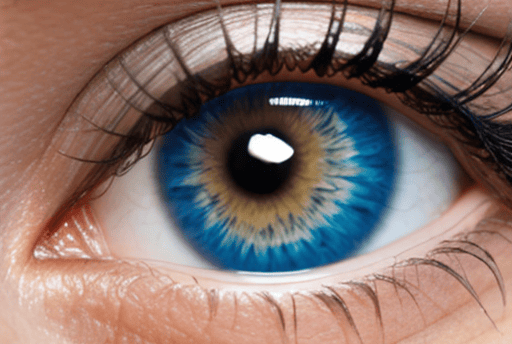Ocular health: Advances in Drug Delivery
Manish Shukla
7/6/20233 min read
The field of ophthalmic drug delivery has witnessed remarkable scientific advancements, revolutionizing the treatment landscape for ocular diseases and conditions. In this blog, we delve into the latest updates and innovations in ophthalmic drug delivery, highlighting cutting-edge techniques that enhance drug efficacy, patient compliance, and ocular health outcomes. By exploring the intricacies of nanotechnology-enabled drug delivery systems, in situ gel formulations, contact lens-based drug delivery, microneedles, and gene/cell-based therapies, we uncover the scientific progress that captivates the imagination of researchers and clinicians alike.
Nanotechnology-Enabled Drug Delivery Systems: At the forefront of ophthalmic drug delivery, nanotechnology harnesses the unique properties of nanoparticles to achieve precise and targeted drug delivery to ocular tissues. These nanoparticles, with their tailored physicochemical attributes, offer advantages such as improved drug stability, sustained release kinetics, and enhanced bioavailability. The fine-tuning of nanoparticle characteristics through surface modification techniques holds the key to optimizing corneal penetration and prolonging drug retention. Moreover, the emergence of novel drug carriers like liposomes, dendrimers, and hydrogels presents a new paradigm in the development of customizable drug delivery systems, propelling therapeutic outcomes to unprecedented heights.
In-Situ Gel Formulations: In situ gel formulations have garnered scientific attention as an ingenious strategy in ophthalmic drug delivery, enabling a seamless transition from a liquid state to a gel-like consistency upon administration. These formulations hold immense promise due to their ability to provide prolonged drug release, extended residence time on the ocular surface, and improved patient adherence. The responsive nature of thermosensitive, pH-sensitive, and ion-sensitive in situ gels, tailored to physiological cues, ensures sustained drug release, thus optimizing therapeutic efficacy. The intricate rheological properties and bioadhesive nature of in-situ gels underscore their undeniable potential in the field of ocular drug delivery.
Contact Lens-Based Drug Delivery: Leveraging the ubiquity of contact lenses, researchers have embarked on a quest to transform these devices into novel drug delivery platforms for ocular therapeutics. By incorporating drug-releasing polymers or coatings, contact lenses hold the promise of controlled and sustained drug release directly onto the ocular surface. This localized approach boasts numerous advantages, including targeted therapy, prolonged drug delivery duration, and enhanced patient compliance. Ongoing scientific endeavours focus on refining drug loading strategies, fine-tuning release kinetics, and optimizing the biocompatibility of drug-eluting contact lenses, igniting enthusiasm within the scientific community.
Microneedles for Precise Ocular Drug Delivery: Microneedles have emerged as a fascinating technology for targeted and minimally invasive ocular drug delivery. These micron-scale structures possess the ability to traverse ocular barriers painlessly, enabling precise delivery of therapeutics to specific ocular tissues. Microneedles offer advantages such as enhanced drug bioavailability, reduced systemic side effects, and improved patient comfort. As researchers continue to refine biocompatible microneedle arrays and optimize design parameters, the potential for safe and effective drug administration in complex ocular conditions like glaucoma, age-related macular degeneration (AMD), and diabetic retinopathy becomes increasingly within reach.
Gene and Cell-Based Therapies for Ocular Disorders: The realm of gene and cell-based therapies presents a scientific frontier in the treatment of inherited retinal diseases and other ocular disorders. Techniques such as viral vectors, CRISPR-Cas9 gene editing, and stem cell transplantation hold tremendous potential for precisely delivering therapeutic genes or cells to affected retinal tissues. These innovative approaches offer the promise of long-term therapeutic benefits and have the potential to address previously untreatable ocular conditions. The convergence of groundbreaking scientific advancements and clinical research in this domain offers a glimpse into a future where ocular therapeutics are reshaped, heralding a new era in patient care and visual restoration.
The recent scientific progress in ophthalmic drug delivery techniques captivates the imagination of researchers and clinicians alike. The advent of nanotechnology-enabled drug delivery systems, in situ gel formulations, contact lens-based drug delivery, microneedles, and gene/cell-based therapies has propelled the field forward, promising enhanced drug efficacy, patient comfort, and overall ocular health. As researchers continue to unravel the intricacies of these scientific breakthroughs, interdisciplinary collaborations and rigorous investigations will pave the way for further advancements. With continued dedication, the future of ophthalmic drug delivery holds immense potential for transforming the management of ocular diseases and conditions, benefiting patients worldwide and illuminating the path toward sight restoration and improved quality of life.


